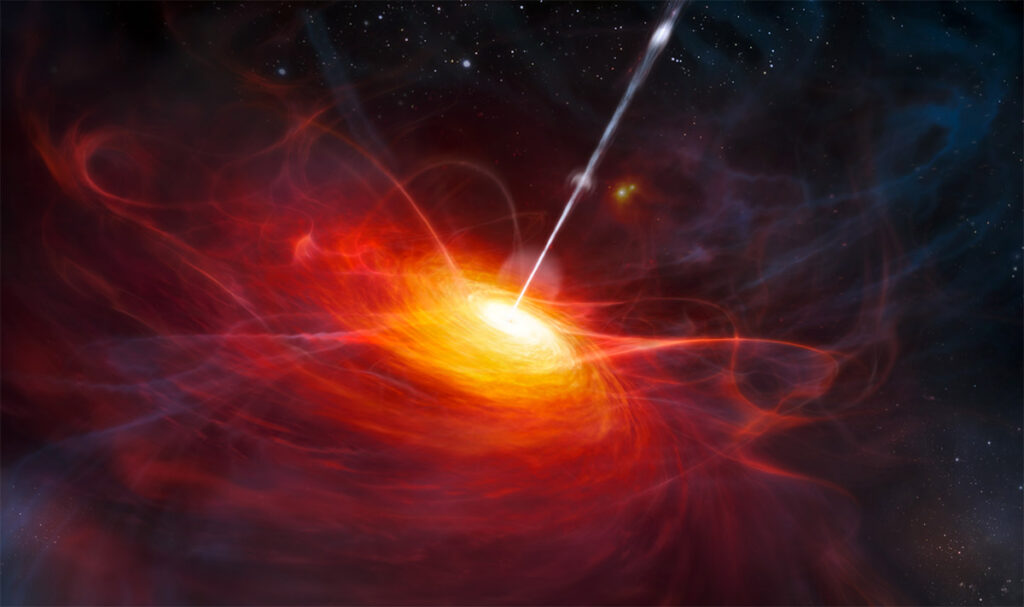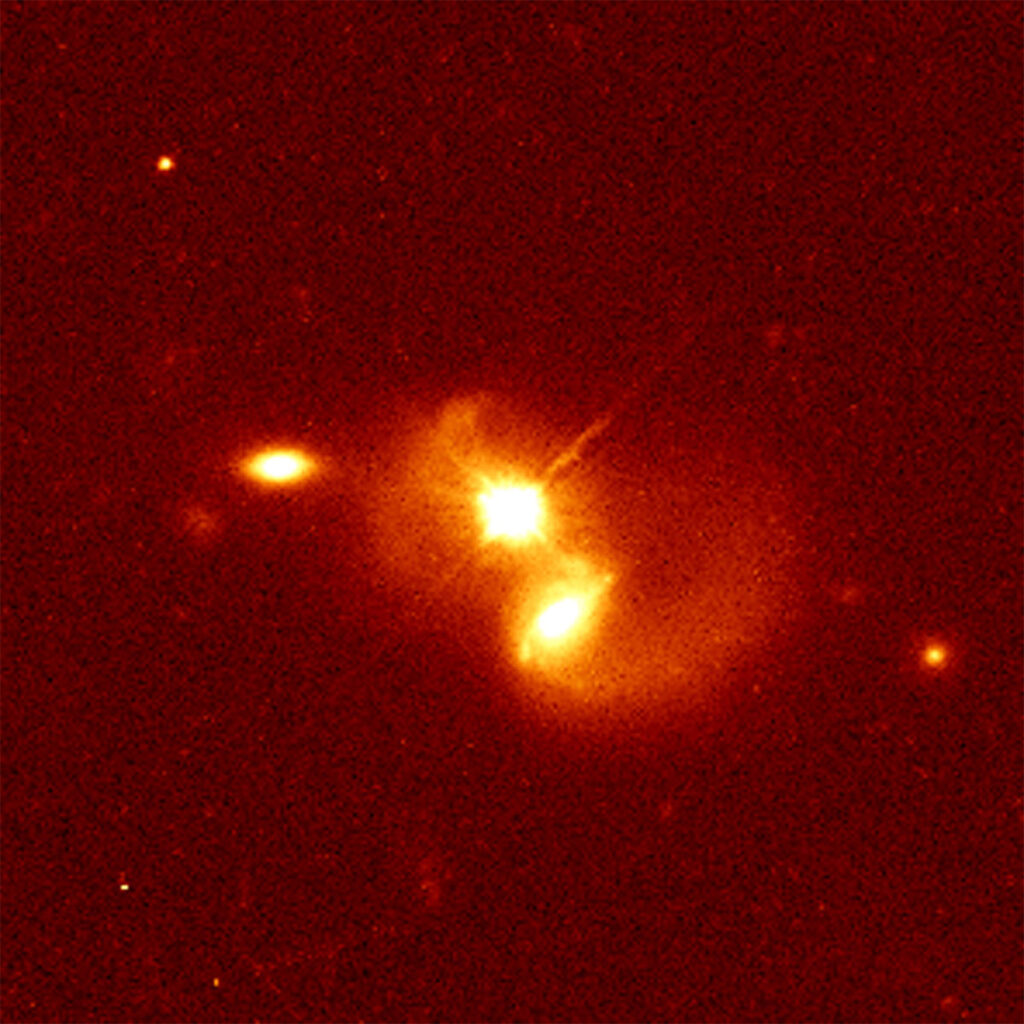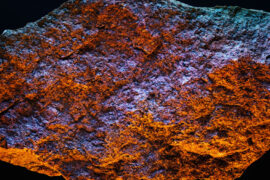Quasars are some of the most impressive, intriguing, and scary objects in the universe.
They are the brightest objects that we know about. And paradoxically, they happen right around black holes.
Oh, and they are also one of those things no one can agree on how to pronounce correctly. I’m team kway-zar personally.
Astronomers are very interested in studying quasars because they believe they will tell us a lot about the evolution of the universe.
While there is a lot to learn about them, there are solid theories about their creation process.
But first, let’s define them.
What is a Quasar?
A quasar is an active galactic nucleus (AGN) that is bright way above the average. But that raises another question. What is an AGN?
At the center of a galaxy, you can usually find a supermassive black hole. This is called a galactic nucleus. When this nucleus pulls a lot of dust, gas, and other material, the forces exerted create so much friction a huge amount of light is emitted all across the electromagnetic spectrum. This is called an Active Galactic Nucleus, or AGN for short.
Quasars are one of those celestial objects that are only loosely defined because there isn’t really a set number that defines exactly what constitutes a “very bright AGN”. But just to give you an idea of the incredible amount of light quasars generate, they can be 100,000 times brighter than the Milky Way galaxy.
One of the most interesting things about Quasars is that they have only been found very far away from us. But remember that light from these faraway objects takes millions of light-years to reach us. This means that we look at them, we are really looking into the past of the universe.
And since quasars have only been found at great distances, one of the working theories is that they only existed in the early days of the universe.
The name quasar is actually a bit of a misclassification. When they were originally discovered, they were detected thanks to the radio signals they emit, and scientists thought they were star-like objects. Quasar is an abbreviation for “quasi-stellar radio source” which now we know doesn’t really tell the whole story about them, but the name stuck for convention.
Is a quasar a black hole?
Black holes are a big part of what makes up a quasar. All quasars are powered by a supermassive black hole, but not all black holes qualify as quasars. It needs to meet a few additional requirements in order to be classified as one. These are:
- It needs to be a supermassive black hole (the largest type of black holes)
- It needs to be at the center of a galaxy (galactic nucleus)
- It must be active
- It must be brighter than the average active galactic nucleus
How are quasars formed?
When massive amounts of dust and gas form around a central body because of its gravitational force, an accretion disk is formed around it. This is the ring-like glow that we see around photos of black holes.
Quasars form when extreme amounts of material (dust and gas) fall into the accretion disk of a supermassive black hole. The gravitational forces over these materials create enormous amounts of friction, increasing the temperatures and producing a huge output of electromagnetic radiation (light across all spectrums).
Because of the size of supermassive black holes and the large amount of mass available at the center of some galaxies, the brightness generated by quasars is so big they are the most luminous type of objects that we know about.
One of the coolest things about quasars is that when they are formed, a jet or a stream of intense light shoots out directly out of its pole as if it was a giant laser. Unfortunately, we haven’t been able to capture this in much detail but look at this artist’s rendering.

When this jet happens to point directly towards Earth, the quasar appears even brighter from our point of view. We call those a blazar.
Photos of Quasars
The Hubble and some observatories have been pointed a few times to capture some images of quasars. Here are some of the best images.



Summary
- Quasars are located at the center of some galaxies where there’s a lot of activity
- Quasars form when the supermassive black hole in a galactic nucleus has an extremely active and luminous accretion disc
- Quasars are the brightest category of objects that we know about







